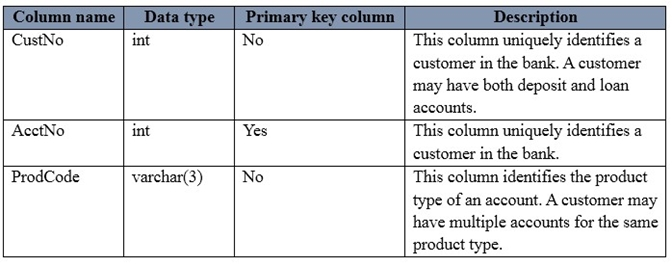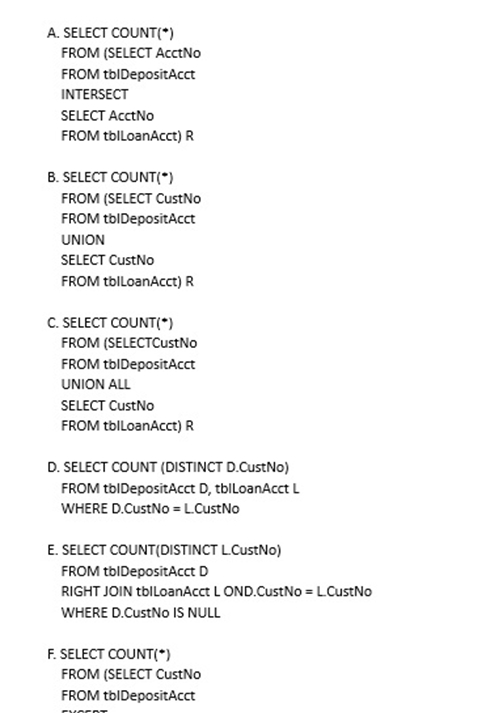

You have a database for a banking system. The database has two tables named tblDepositAcct and tblLoanAcct that store deposit and loan accounts, respectively. Both tables contain the following columns:
You need to determine the total number of customers who have only deposit accounts.
Which Transact-SQL statement should you run?
Jiacheng
Highly Voted 5 years, 4 months agoflashed
Highly Voted 5 years, 4 months agojpdvm
5 years, 4 months agoanonimdom
5 years, 4 months agoAndy7622
Most Recent 4 years, 6 months agochaoxes
4 years, 11 months agoBacky
5 years agoAndi64
5 years, 4 months agogtc108
5 years, 4 months ago